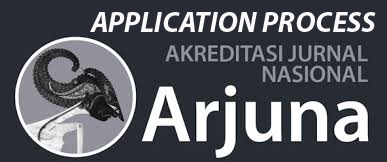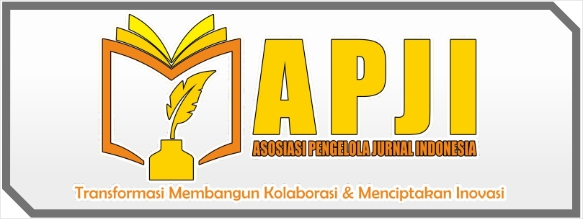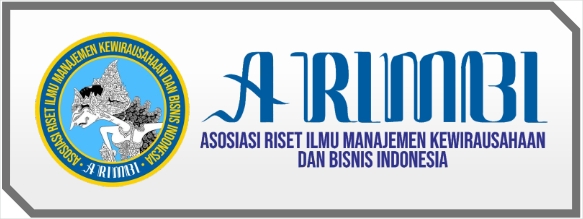Digitalisasi Pelabuhan dalam Perspektif Administrasi Publik Studi Kasus Penerbitan Surat Persetujuan Berlayar dengan Sistem Inaportnet
DOI:
https://doi.org/10.58684/jarvic.v2i2.175Keywords:
Inaportnet, digitalisasi pelabuhan, koordinasi stakeholder, Surat Persetujuan Berlayar (SPB), administrasi publik, efisiensi kepelabuhananAbstract
The digital transformation of port services through the implementation of Inaportnet aims to enhance efficiency, transparency, and accuracy in maritime administration, particularly in the issuance of Surat Persetujuan Berlayar (SPB). However, its implementation faces various challenges, primarily in stakeholder coordination, involving Syahbandar (Harbormaster), Customs, Immigration, Port Health Quarantine (KKP), port operators, and shipping agents. This study analyzes key challenges in Inaportnet implementation, including regulatory misalignment between institutions, lack of system interoperability, inadequate digital infrastructure in several ports, and low digital literacy among users. Using a qualitative descriptive method with a literature review approach, this research examines various regulations, industry reports, and previous studies to identify obstacles and optimal strategies for Inaportnet adoption. The findings reveal that fragmented regulations across institutions lead to procedural inconsistencies, causing delays in SPB issuance. Additionally, limited interoperability between Inaportnet and other institutional systems, such as CEISA (Customs) and SIMKIM (Immigration), hampers document verification. Other barriers include digital infrastructure disparities, where 65% of feeder ports in Indonesia still experience limited internet access, and low digital literacy among system users, leading to data entry errors and administrative delays. To address these challenges, this study recommends harmonizing regulations, enhancing system interoperability, investing in digital infrastructure, and providing continuous technical training for stakeholders. With these strategies, Inaportnet is expected to function optimally, support port service digitalization, and enhance the competitiveness of Indonesia’s maritime sector in global trade.
References
Ansell, C., & Gash, A. (2008). Collaborative governance in theory and practice. Journal of Public Administration Research and Theory, 18(4), 543–571. https://doi.org/10.1093/jopart/mum032
Davis, F. D. (1989). Perceived usefulness, perceived ease of use, and user acceptance of information technology. MIS Quarterly, 13(3), 319-340. https://doi.org/10.2307/249008
Dunleavy, P., Margetts, H., Tinkler, J., & Bastow, S. (2014). Digital era governance: IT corporations, the state, and e-government. Oxford University Press.
Easton, D. (1965). A systems analysis of political life. Wiley.
Gani, A., et al. (2023). Digital ports: Enhancing efficiency and transparency in global maritime networks. Transportation Research Part E, 161, 102726. https://doi.org/10.1016/j.tre.2023.102726
Indrajit, R. E. (2022). Challenges in the implementation of digital systems in Indonesian ports. International Journal of Maritime Studies, 14(1), 101-116.
Jensen, A., et al. (2023). Enhancing maritime digitalization: A stakeholder perspective. Maritime Policy & Management, 50(1), 25-45. https://doi.org/10.1080/03088839.2023.2145678
Kementerian Perhubungan. (2022). Laporan kinerja pelabuhan di Indonesia.
Malone, T. W., & Crowston, K. (1994). The interdisciplinary study of coordination. ACM Computing Surveys, 26(1), 87–119. https://doi.org/10.1145/174666.174668
Nasution, A., & Basri, R. (2022). Analyzing port coordination in Indonesia: Challenges and opportunities. Journal of Public Administration Studies, 7(2), 101-123.
Osborne, S. P. (2010). The new public governance? Emerging perspectives on the theory and practice of public governance. Routledge.
Prakash, A., & Srivastava, M. (2022). Digital ports: Enhancing efficiency and transparency in global maritime networks. Transportation Research Part E: Logistics and Transportation Review, 161, 102726. https://doi.org/10.1016/j.tre.2022.102726
Purwanto, E., et al. (2020). The role of stakeholder coordination in port efficiency. International Journal of Logistics Management, 31(2), 279-299. https://doi.org/10.1108/IJLM-09-2019-0251
Sutrisno, B., et al. (2023). Evaluating the impact of digital transformation in small ports: A case study of Pelabuhan Sibolga. Journal of Transportation Studies, 15(3), 231-245.
United Nations Conference on Trade and Development (UNCTAD). (2023). Digitalization of ports: A global perspective. Geneva: United Nations.
United Nations Development Programme (UNDP). (2015). Governance for sustainable development: Integrating governance in the post-2015 development framework. United Nations Development Programme.
Wibowo, A., et al. (2021). The role of Inaportnet in improving maritime administration in Indonesia. Journal of Maritime Studies, 15(4), 45-59.
Widianto, B., et al. (2023). Operational efficiency in Indonesia’s secondary ports: Challenges and strategies. Maritime Economics & Logistics, 25(2), 210-229. https://doi.org/10.1057/s41278-023-00291-7
World Bank. (2022). Port performance indicators: Measuring efficiency and sustainability. Washington, D.C.: World Bank Publications.
Zhang, Y., et al. (2023). Digital transformation in maritime logistics: A review and future research agenda. Maritime Policy & Management, 50(3), 435-460. https://doi.org/10.1080/03088839.2023.2145679















